The Biggest Mistakes A Chef Says You're Making With Boozy Butter
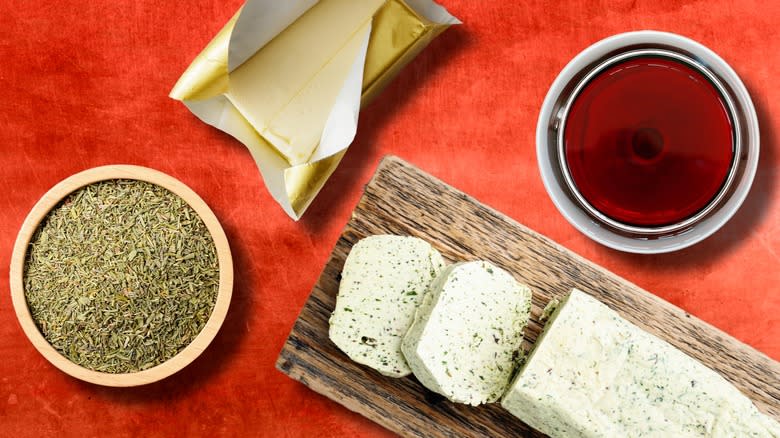
Butter is fantastic in all forms, but there's nothing like a tasty compound butter to transform an already delicious food into an even more delicious version of itself. Adding your favorite flavorful booze into the mix elevates compound butter even more. We're used to cooking with alcohol in dishes ranging from drunken shrimp to bourbon barbecue sauce, but adding a splash of your favorite spirit to butter is a culinary trick worth trying.
In culinary school, I learned the traditional compound butters like Maitre d'hotel, a simple mix of freshly squeezed lemon juice, finely chopped parsley, salt, and pepper. During my short-lived restaurant kitchen career, I made compound butters that were rolled into logs and sliced into perfect rounds. They were carefully perched on top of everything from hot-off-the-grill steaks and chicken breasts to salmon filets and lobster tails for a last-minute burst of flavor.
You don't have to go to culinary school or work in a restaurant to make fabulous compound butter at home. Mixing compound butter is simple. Whip flavorful ingredients into softened butter, and you're done, but even with a kitchen task as easy as this, there are some common mistakes you should avoid. Learn to think outside the butter dish and mix up a compound butter full of your favorite flavors today.
Read more: The 20 Best Olive Oils For Cooking
Choosing A Basic Butter
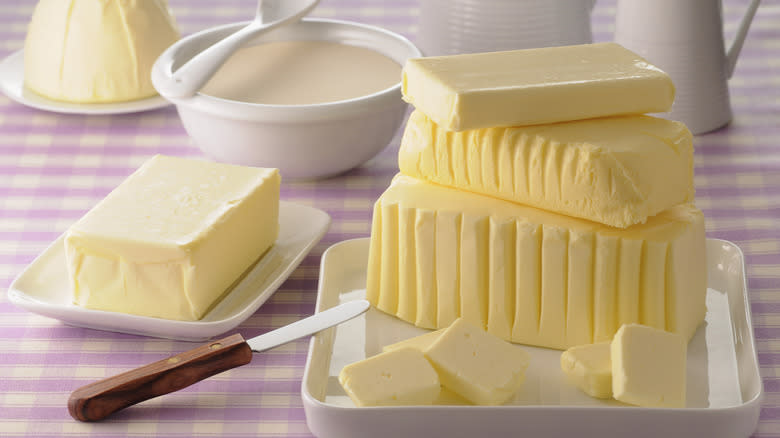
One way to ensure simple recipes turn out well is to prepare them with the best quality ingredients you can find. Boozy compound butter is no exception to this rule. Most boozy butters are made with just a few ingredients so it's imperative that you choose those ingredients wisely. When picking butter for boozy butter, go for the good stuff.
What makes a type of butter the best butter can vary depending on how it will be used. The science of baking requires certain qualities in butter in order for your baked goods to come out perfectly. For compound butter, you should look for butter that tastes great and has a smooth, creamy consistency.
Grass-fed butter is the best choice for making velvety, smooth, boozy compound butter. It contains a higher percentage of unsaturated fats, which gives the butter a softer texture. Grass-fed butter also contains more moisture due to its smaller fat cells, which also creates a smoother butter. Starting with unsalted grass-fed butter allows you to season your butter yourself so you can control exactly how much salt your final product contains. The ultra-rich flavor of grass-fed butter seals the deal.
Using Cold Butter
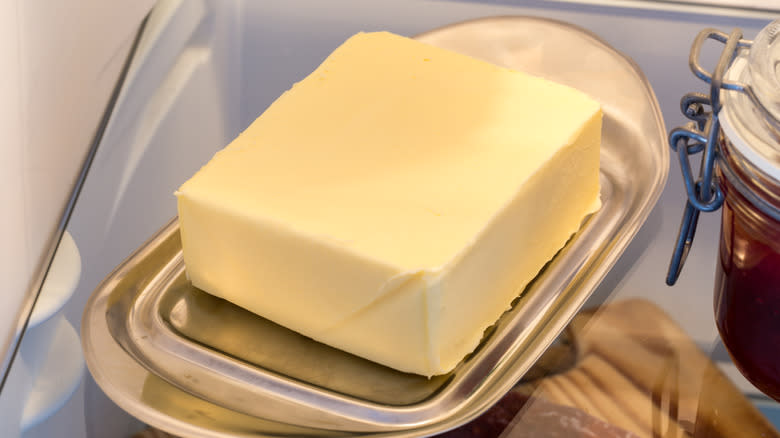
If you've ever baked a cake or a batch of cookies from scratch, you've undoubtedly read recipes directing you to use room-temperature butter. When butter warms up to room temperature, it can absorb air more easily than when it's cold. The air is what gives baked goods their lift. It's also what gives compound butter its light and creamy texture.
Cold butter is typically hard, which makes it harder to blend in your other ingredients. You'll end up with a grainy consistency and pockets of chunky butter that don't contain any of your other ingredients. The goal with compound butter is a smooth, spreadable butter full of wonderful flavors in each bite. Attempting to make it with cold butter will give you exactly the opposite result.
Room temperature refers to temperatures between 68 F and 72 F. Butter at this temperature should be soft to the touch, soft enough for a clean finger to make an impression. You can bring your butter to room temperature by letting it hang out on your counter for 45 minutes to one hour. If you're short on time, cutting the butter into small pieces will help it reach room temperature faster.
Microwaving The Butter To Soften It Quickly
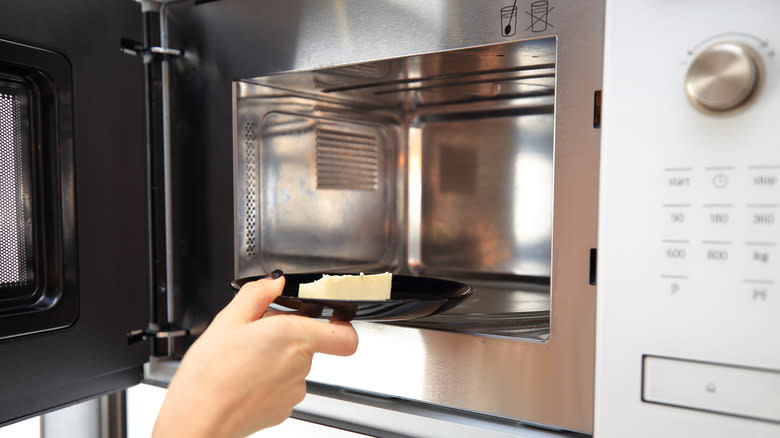
Making compound butter is quick work once you've gathered and prepped your ingredients. After your mix-ins are measured, chopped, or minced and your butter is softened, you can whip up a boozy compound butter in a matter of minutes. Waiting for your butter to soften is the boozy compound butter step that takes the longest. Impatient cooks may be tempted to look for a shortcut to room-temperature butter, like microwaving it until it's soft. This might seem like the easy route to softened butter, but it's more likely to lead to a boozy butter bust.
Heat can be your worst enemy when making compound butter because melted butter and softened butter are two completely different things. Melting butter can happen easily and inadvertently in the microwave, even if you're just popping the butter in for a few seconds.
Microwaves can heat unevenly, causing the butter to melt completely in some sections and remain solid in others. When butter is melted, both its taste and consistency are altered, and even when it solidifies as it cools, it never returns to its original texture or flavor.
Adding Too Much Booze
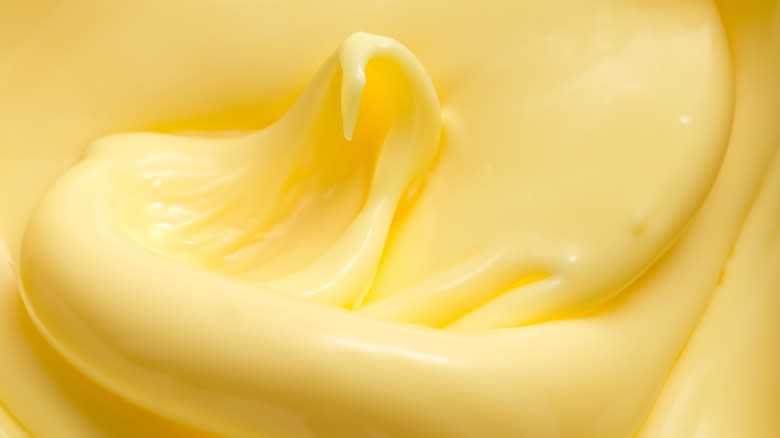
Boozy butter is, as the name implies, all about the booze. The goal is to create a delicious and balanced blend of butter's rich, savory flavor and your spirit of choice. You can toss in other ingredients for a varied flavor, but the booze is the star of the show. If you love the taste of the alcohol you're using in your compound butter, you might be tempted to add in a splash more than your recipe calls for, but beware. Too much of a good thing isn't always a good thing.
Butter, in its simplest form, is made up of three ingredients: fat, milk solids, and water. Its normal configuration includes about 17% water. Even though butter contains water, it doesn't respond well to additional liquid in large quantities. If you add too much liquid, it will rise to the surface of the butter or weep once the butter chills.
When making compound boozy butter, don't add more than 1 to 2 teaspoons of alcohol or other liquids per half cup of butter. You'll end up with a light, velvety compound butter instead of a soggy one.
Mixing The Butter By Hand
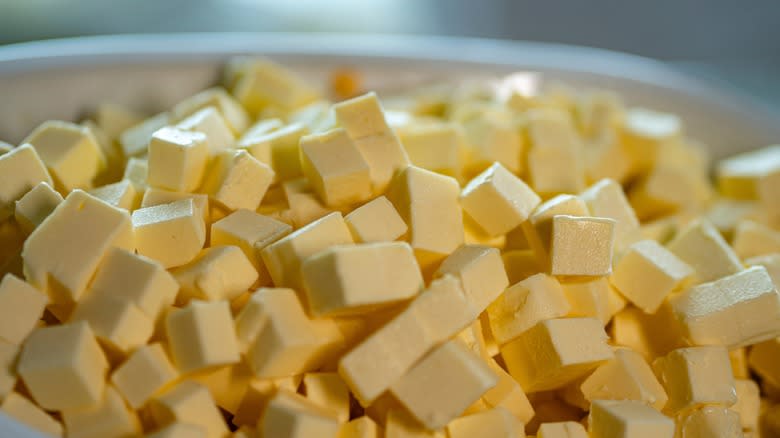
There are some kitchen tasks that are best completed by hand instead of with a tool or appliance. Rolling sushi, adding a scalloped edge to your pie crust and chopping up a gremolata to garnish a steak could all likely be done with a kitchen tool or appliance, but they are at their finest when you take the time to get your hands dirty and get them done by hand.
Compound butter is not one of those tasks. Yes, you can stir ingredients into softened butter by hand, but to achieve the perfect compound butter consistency, you'll need more than a bit of elbow grease. Boozy butter gets its hallmark texture from the air that is whipped into the softened butter. This is where the convenience of modern appliances comes in. It is much more difficult, if not impossible, to reach the same level of airiness without the power of a mixer or food processor.
Mixing by hand can make it more challenging to ensure that your ingredients are evenly distributed throughout the butter, which can leave you with pockets of butter overloaded with your flavorful mix-ins and others with no seasoning at all. Using a mixer or food processor makes it easier to create a boozy butter that is well-mixed and smooth.
Replacing Fresh Herbs With Dried
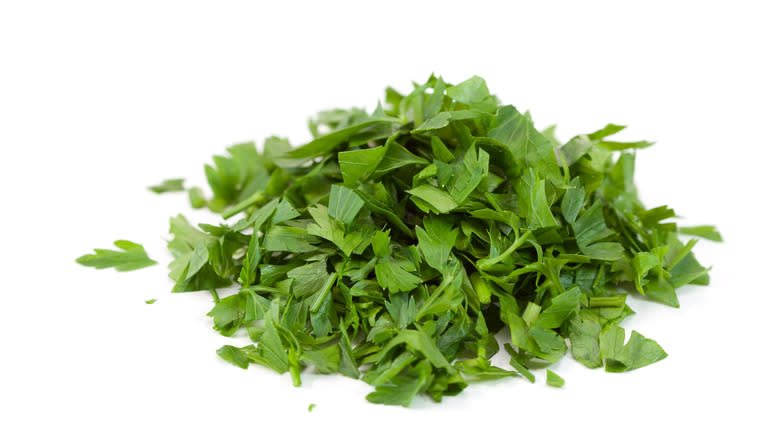
In most recipes, fresh and dried herbs can be used interchangeably with some adjustments in quantity. This makes it possible for you to season your favorite dishes and enjoy the benefits of your favorite herb's flavor even if you don't have a fresh version on hand. This is a lifesaver for those of us without a green thumb or the space or time to grow and tend a fresh herb garden. While dried herbs carry a big convenience factor in the kitchen, they're not always the best choice, especially for boozy butter.
Dried herbs contain a concentrated flavor, so you'll need to use less of them than fresh herbs, but they lack the brightness that comes with fresh. Dried herbs are plenty flavorful but in a different way. They lend a duller, less vibrant flavor to foods they're added to, and because they rely on added moisture to enhance their flavor, you won't get their full effect when you add them to compound butter.
Dried herbs can also negatively impact the texture of your boozy butter. Fresh herbs are softer and better able to blend into the butter more smoothly than dried herbs, which are typically rougher in texture.
Not Prepping Your Add-Ins Properly
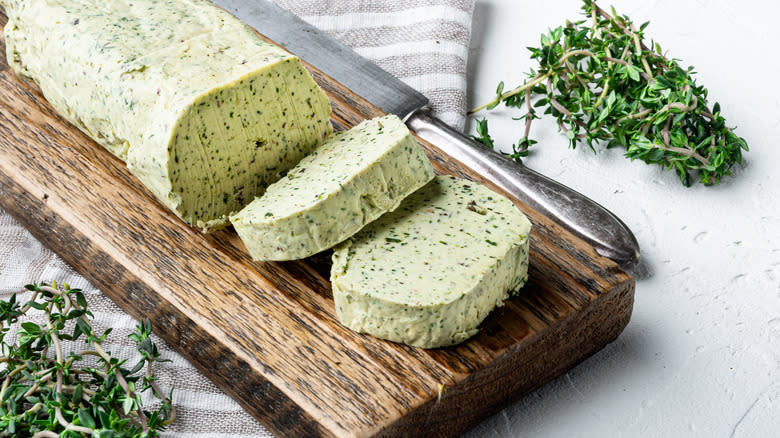
By now, it should be clear that texture is a top priority when making boozy butter, so the last thing you want to do is add anything into the mix that will keep you from achieving the peak velvety smoothness that is boozy butter goals. That includes the ingredients you add to your butter.
In order to preserve the silken texture you've whipped into your softened butter, it's imperative that you pay close attention to how you prep your mix-ins. Everything, from fresh herbs, to garlic to green onions, should be chopped as finely as possible. This makes it easier for these foods to blend into your butter without altering its texture, and the smaller pieces make it easier for the butter to absorb their flavor. Taking extra care when you prep your ingredients will make sure you end up with a smooth, extremely flavorful boozy butter instead of a chunky butter.
Not Reducing Wine Before Adding It To The Butter
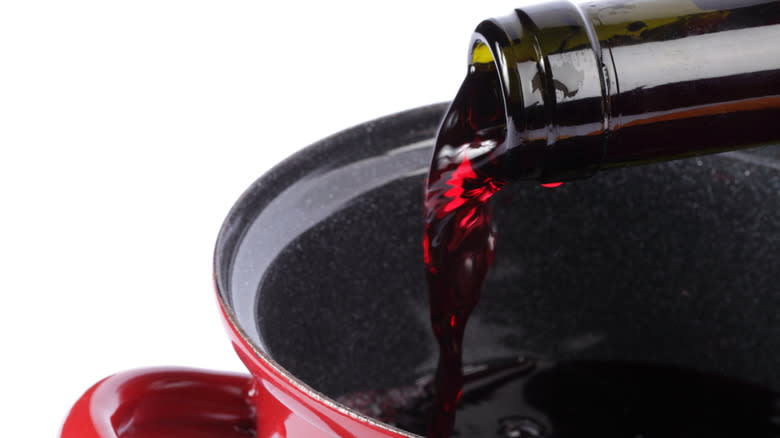
Adding too much liquid to your boozy butter, even if it's as delicious as wine, can be disastrous. However, even if you get the amount right, there's another step you should take for the best results before using it.
The best way to make the most of your wine's flavor without the risk of adding too much is to reduce the wine before you mix it in. If you're not familiar with the process of reduction, it's simple. You place your liquid in a pan over medium heat and allow it to simmer. As it simmers, some of the liquid will evaporate, leaving you with less, or a reduced amount, in the pan. As the liquid reduces by volume, the flavor intensifies. This gives you a thicker, more flavorful wine to add to your boozy butter. Be sure to give your reduced wine time to cool before you add it to your butter. Pour it in straight from the pan and it will melt the butter.
Only Using Wine In Boozy Butter
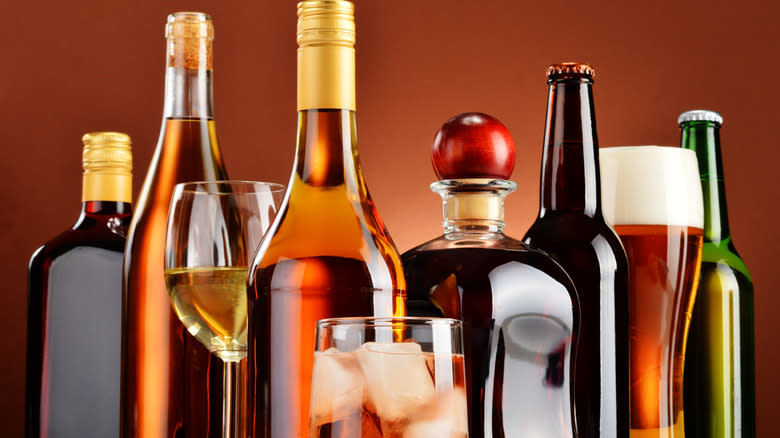
Wine can be a fantastic tool in the kitchen. Add a splash to a pan sauce to give it depth, deglaze a pan with a glug of red for a tasty French onion soup, or enjoy a glass while you cook. It's versatile and can add great flavor to many dishes, including boozy butter. As adaptable as wine is, you should step outside your wine rack when making boozy compound butter. There are numerous other options behind your bar that can elevate your next batch to something truly special. Spirits like tequila, vodka, bourbon, and beer are all boozes you should be adding to butter.
Take advantage of tequila's wide-ranging flavors to make tequila butter. It's the perfect addition to seafood and vegetables. Add vodka to butter to create tasty gems like martini butter and bloody mary butter, both of which make excellent hors d'eouvres when smeared on a toasted baguette. Bourbon butter can add flavor to vegetables like corn and potatoes. Beer should be treated like wine in compound butter. It should be reduced and cooled before being mixed into the softened butter.
Read the original article on Tasting Table

